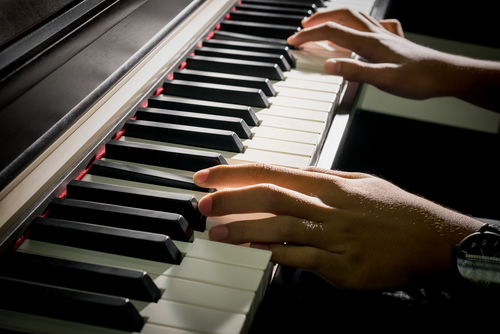 Over the past decade, neuroimaging studies, basically taking snapshots of neural circuitry as behavior occurs and mapping cause to effect, have sought to identify components of a neural circuit that operates across various domains of creativity. A new paper suggests, however, that creativity cannot be fully explained in terms of the activation or deactivation of a fixed network of brain regions. Rather, the scholars say, when creative acts engage brain areas involved in emotional expression, activity in these regions strongly influences which parts of the brain's creativity network are activated, and to what extent.
Over the past decade, neuroimaging studies, basically taking snapshots of neural circuitry as behavior occurs and mapping cause to effect, have sought to identify components of a neural circuit that operates across various domains of creativity. A new paper suggests, however, that creativity cannot be fully explained in terms of the activation or deactivation of a fixed network of brain regions. Rather, the scholars say, when creative acts engage brain areas involved in emotional expression, activity in these regions strongly influences which parts of the brain's creativity network are activated, and to what extent.
The workings of neural circuits associated with creativity are significantly altered when artists are actively attempting to express emotions, according to a new brain-scanning study of jazz pianists. Previous papers using functional magnetic resonance imaging (fMRI) to study musical improvisation, freestyle rapping, and the rendering of caricatures--creative acts that unfold in real time and are therefore more amenable to laboratory studies than, say, painting--says it deactivates a brain region known as the dorsolateral prefrontal cortex (DLPFC), which is involved in planning and monitoring behavior. This DLPFC deactivation has been taken to be a neural signature of the "flow state" artists may enter to free up creative impulses.
But in the new study, the researchers found that DLPFC deactivation was significantly greater when the jazz musicians, who played a small keyboard while in the fMRI scanner, improvised melodies intended to convey the emotion expressed in a "positive" image (a photograph of a woman smiling) than when they aimed to capture the emotions in a "negative" image (a photograph of the same woman in a mildly distressed state).
On the other hand, improvisations targeted at expressing the emotion in the negative image were associated with greater activation of the brain's reward regions, which reinforce behaviors that lead to pleasurable outcomes, and a greater connectivity of these regions to the DLPFC.
"There's more deactivation of the DLPFC during happy improvisations, perhaps indicating that people are getting into more of a 'groove' or 'zone,' but during sad improvisations there's more recruitment of areas of the brain related to reward," said first author Malinda McPherson, graduate student in the Harvard-MIT Program in Speech and Hearing Bioscience and Technology. "This indicates there may be different mechanisms for why it's pleasurable to create happy versus sad music."
Because the images themselves might induce an emotional response in the musicians, in addition to the brain scans made while the musicians improvised, each scanning session also included a time period in which the musicians passively viewed the images. For each musician, any brain activity data generated during these passive viewing periods, including emotional responses, were subtracted from that elicited during their musical performances. This allowed the researchers to determine which components of brain activity in emotional regions were strongly associated with creating the improvisations.
"The bottom line is that emotion matters," said senior author Charles Limb, MD of the University of California San Francisco. "It can't just be a binary situation in which your brain is one way when you're being creative and another way when you're not. Instead, there are greater and lesser degrees of creative states, and different versions. And emotion plays a crucially important role in these differences."
Limb said the research team avoided biasing the musicians' performances with words like "sad" or "happy" when instructing the musicians before the experiments.
"The notion that we can study complex creativity in artists and musicians from a neuroscientific perspective is an audacious one, but it's one that we're increasingly comfortable with," Limb said. "Not that we're going to answer all the questions, but that we have the right to ask them and to design experiments that try to shed some light on this fascinating human process."
Published in Scientific Reports. Top image: Shutterstock




Comments